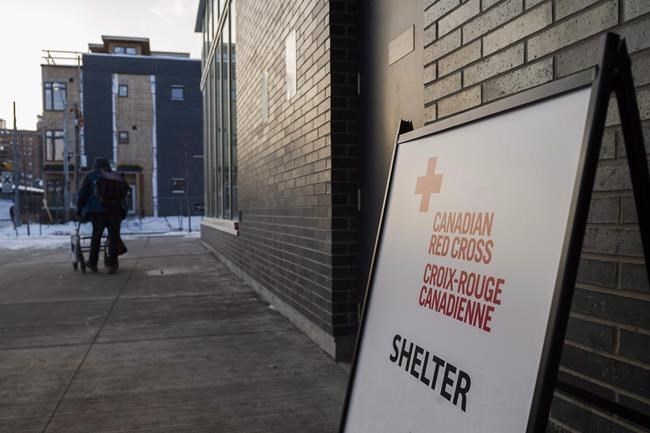TORONTO — Warming centres for those who need shelter should open in Toronto when temperatures drop to -5 C, city staff recommend in a new report, a proposal that would lower a threshold advocates have long criticized as cruel and arbitrary.
The city currently opens warming centres when temperatures dip to -15 C, or -20 C. The proposed policy update to be presented at a council commitee next week could see that change this year and is supported by Toronto Public Health.
Coun. Shelley Carroll called the proposed change "an important first step".
"Staff will continue to work to secure additional warming centre sites, expand access to our existing sites, and advance our housing goals so homelessness in our city becomes a rare and brief experience," Carroll, who chairs the Economic and Community Development Committee, wrote in a statement.
Warming centres are billed as a surge response for the city's shelter system during periods of cold weather, offering at minimum a place to rest, snacks and referrals to emergency shelters.
But with city data showing the shelter system at capacity and upwards of 100 people turned away by a central intake hotline on any given night, advocates have kept warming centres in the spotlight in recent months and pressed councillors to keep them open 24-7 throughout the winter.
Longtime street nurse Cathy Crowe said the move to lower the opening criteria for warming centres was welcome but represented another "Band-Aid" solution to the homelessness crisis in Toronto.
"It's the bare minimum," she said.
The city's current policy of opening warming centres when temperatures dip to -15 C is inconsistent with research indicating a vast majority of hypothermia cases in Toronto's homeless population occur at temperatures above that mark, Crowe said.
A fixation on temperature thresholds, when the city's shelter system is routinely running at capacity, can overlook the everyday risks of living without shelter in any temperature, she said.
"It's a very Canadian obsession," she said. "There should be a right to shelter every night of the year."
The city set up a fourth warming centre in January and council eventually passed an amendment to the proposed budget in February to keep one warming centre open until this month at Metro Hall.
That repurposed office tower has no showers, cooking facilities or lockers available, Crowe said, likening it to a field operation set up in the aftermath of a hurricane.
The city report proposing the policy change for the warming centres recommends they open at -5 C and/or when Environment Canada issues freezing rain, snow squall, winter storm, snowfall or blizzard warnings.
The report also said shelter staff are working to secure at least four suitable locations for warming centres in the upcoming winter season, with the goal of having one downtown, and the others in the east, west and north ends of the city.
The staff report recommends city council ask the provincial and federal governments for $5 million to help its winter weather response.
Without the $5 million, there would be no funding available for warming centres staring in January 2024, the city said. That funding would also allow it to keep one warming centre open around the clock.
Toronto has repeatedly asked the other levels of government for help covering a nearly $1-billion shortfall in the city's 2023 fiscal plan, in part tied to increases in pandemic-related shelter costs, but no bailout was included in the recent provincial or federal budgets.
The city report also recommends city council ask the provincial and federal governments for a $20-million boost to the Canada-Ontario Housing Benefit. The rent supplement pays the difference between 30 per cent of the recipient's household income and the average market rent in the area.
The report estimates an extra $20 million could help transition upwards of 1,600 people from the shelter system into rental market housing.
This report by The Canadian Press was first published April 18, 2023.
Jordan Omstead, The Canadian Press

